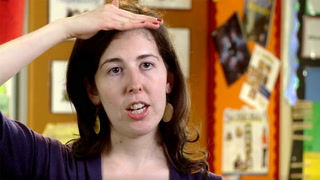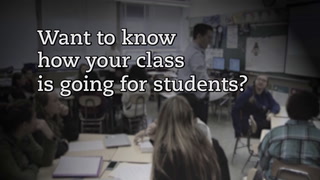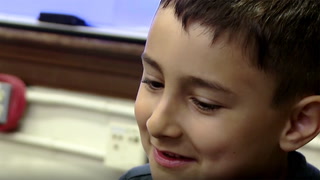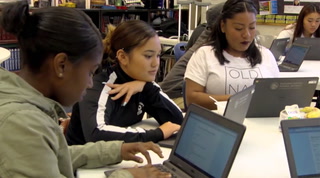Series Tch Tips: Three Ways to Encourage Student Collaboration
Save to My Resources
PLEASE CREATE A NEW ACCOUNT OR LOG IN TO ACCESS THIS CONTENT
Enjoy your first video for free. Subscribe for unlimited access.
Have questions about subscribing?
Click Here to learn more about individual subscriptions.
Click Here to learn more about School and Institution access.
Discussion and Supporting Materials
Thought starters
- How does taking think time set students up for successful collaboration?
- How could you explicitly teach listening skills and talking norms?
- How does assigning roles facilitate successful collaboration?
Teachers
Becky Pittard
Elizabeth Iwaszewicz
English Language Arts Math Science Social Studies / Kindergarten 1 2 3 4 5 6 7 8 9 10 11 12 / Coach
Becki Cope
English Language Arts Math Science Social Studies / 2 / Teacher
Newest
|
4 MIN
|
5 MIN
|
5 MIN
UNCUT CLASSROOMS
| TCHERS' VOICE
English Language Arts














66 Comments
Michael Stires Jun 9, 2020 1:11pm
Taking the time to allow for thinking time is particularly important for the development of critical thinking skills in the student. Giving them that time to access a part of their brain that engages into a deeper thought to be able to create a response for the question. Trying to ask a student for the answer when they have not had the time to think about it creates a response that does not really allow the student to take the time to form the appropriate answer. Laying down the foundation for collaboration among the students creates the talking norms within groups to encourage the students to assign roles for one another to work as a team. A teacher needs to first do their homework on student personalities to effectively assign student groups that can work together efficiently and cooperatively.
Lan Pham May 20, 2020 12:58am
The video is very helpful for teachers to learn more ways of how to improve students' collaboration. Communication and collaboration are the core skills that all students need to build, and teachers are the ones who can help them enhance these skills.
Allowing students time to think individually before having a discussion in groups or collaboration is essential as it provides them with time to prepare, think, and question, which will help the collaboration more effectively. Another way to encourage collaboration is that having a partner talk. It is fun and works well with pair-work talks with rules, structures, and talking norms because both students have opportunities to listen and express their opinions. Assigning roles in collaboration can encourage students to work effectively as a team, in which each of them has their role to get the work done. I totally agree that teachers need to understand students well in terms of personalities in order to assign them to groups so that they can collaborate perfectly and efficiently.
andrew patmon Apr 3, 2020 3:33pm
I think the first step giving the students time to think by themselves is extremely important. It gives the student time to actually think deeper about the question/lesson that is presented. When we ask a question and expect a immediate response the student can't really dive into the question and they just start to memorize instead of actually learn about the subject. I thought the piece on creating the groups was good also. We have to know how to group certain students together and make sure every student is being challenged and involved in the lesson with their group. Can't be afraid to change the group if it is not working was a great point also have to give the students every opportunity to succeed.
Daegen Duvall Dec 16, 2019 8:13pm
How does taking think time set students up for successful collaboration?
Think time provides time for independent thinking in order to establish reasons, predictions, answers prior to questions posed, opinions presented, or concepts delivered by someone speaking to them. Students can assess where they are in regards to a concept by working in pairs. Working in pairs provides for peer support and develops listening and speaking schools within rules of engagement constructed by the teacher to support these skills.
How could you explicitly teach listening skills and talking norms?
Listening and talking norms can be taught by creating rules through classroom collaboration, teacher / adult modeling of expected behaviors, use of role playing, etc. The video suggested pairing "chatties with quiets" and ELL with English wholly students to play to student strengths and foster peer support. Assigning roles would also determine who might be asking what which would focus conversation around the concept being taught.
Karen O'Neal Nov 26, 2019 9:38am
Ideas from this video will be useful to me in my classroom due to the fact that my students have difficulty with the English language. They can engage in partner talk to strengthen their vocabulary and learn to work together as a team.